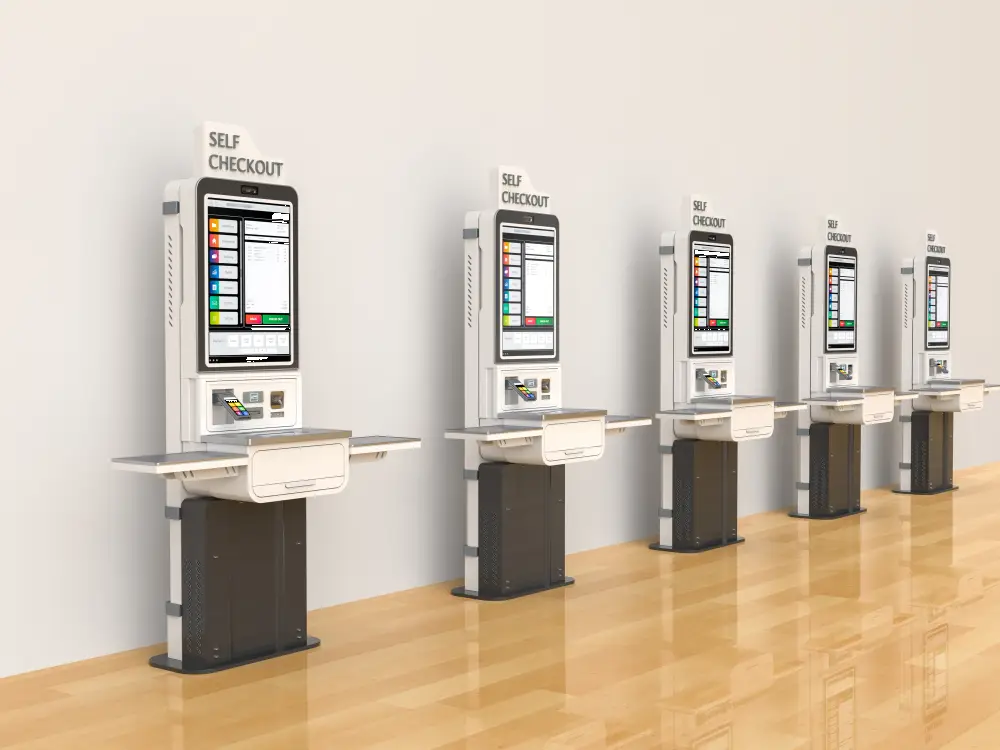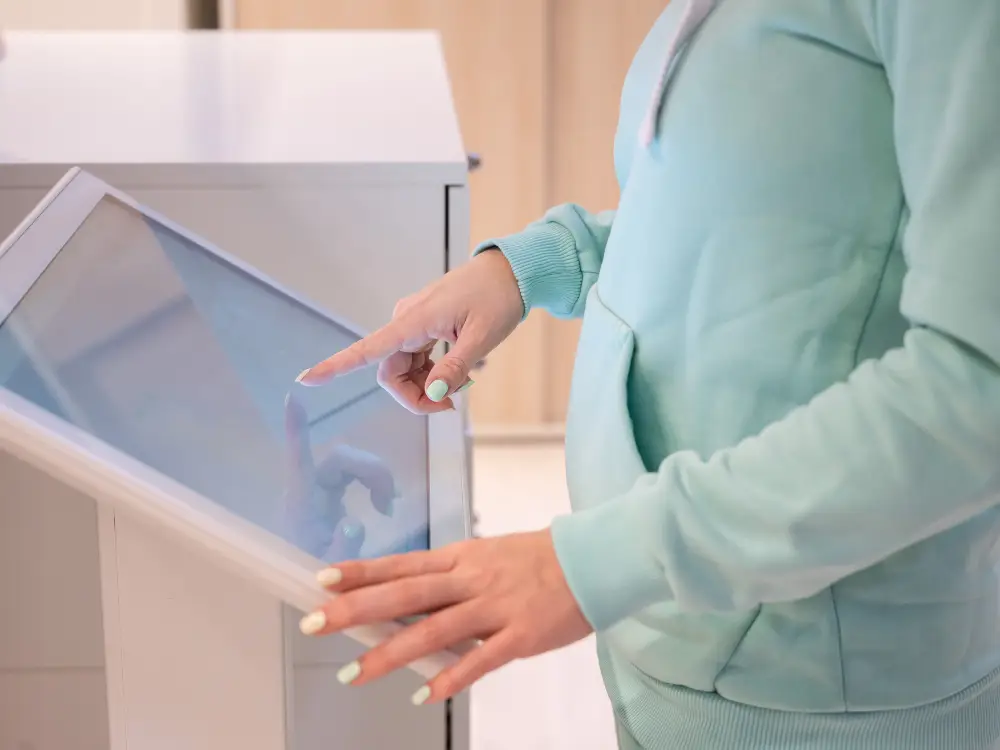In the hospitality industry, providing an exceptional guest experience is paramount to building loyalty, generating positive reviews, and ensuring repeat business. Touchscreen solutions have emerged as a game-changer for hotels, offering innovative ways to improve guest satisfaction, streamline operations, and deliver personalized services. From self-service check-in kiosks to in-room control panels, touchscreens are transforming how hotels operate and interact with guests. In this blog, we’ll explore 5 compelling reasons hotels should invest in touchscreen solutions for their guests.


1. Streamlined Check-In and Check-Out Process
One of the most valuable applications of touchscreens in hotels is their ability to streamline the check-in and check-out processes. Self-service kiosks empower guests to manage these tasks independently, allowing them to check in, retrieve their room keys, and pay their bills without needing assistance from hotel staff. This reduces wait times, particularly during peak hours, and offers guests a more convenient arrival and departure experience. Touchscreen check-in kiosks are particularly beneficial for business travelers and frequent visitors who appreciate the efficiency and speed of self-service options. They can check in quickly without waiting in line, saving time and allowing them to go directly to their rooms. By simplifying these essential processes, hotels can provide a seamless, hassle-free experience that improves guest satisfaction and reduces operational strain. Hotels can also utilize these kiosks to display personalized greetings, provide information on room upgrades, or suggest nearby attractions, adding a touch of warmth and personalization that makes guests feel welcome from the moment they arrive.2. Enhanced In-Room Control and Personalization
Touchscreen panels in hotel rooms offer guests full control over various aspects of their stay, such as lighting, temperature, curtains, and entertainment options. By providing these controls through an intuitive touchscreen interface, hotels empower guests to create a personalized environment tailored to their preferences, contributing to a more comfortable and enjoyable stay. For example, a guest can set a specific temperature and lighting level in their room with just a few taps, creating the perfect ambiance. This high level of control over the room environment is particularly appreciated by guests seeking relaxation and comfort, as it allows them to adjust settings without needing to call the front desk or search for switches. In-room touchscreens also enable guests to access hotel services at their convenience. With a few taps, they can order room service, schedule wake-up calls, or request extra amenities. This not only makes the guest experience more convenient but also reinforces the hotel’s commitment to guest satisfaction through customizable and easily accessible service options.3. Improved Concierge and Service Requests
Touchscreen solutions in hotel lobbies and guest rooms can streamline concierge services, allowing guests to access information and make requests without needing to interact with staff. Guests can use touchscreen kiosks or in-room screens to request room service, make reservations for dining or spa appointments, and even inquire about local attractions and events. This digitization of concierge services enables hotels to respond more quickly to guest requests, enhancing the level of service provided. This functionality is particularly valuable in large hotels where concierge staff may be busy or during peak times. Touchscreen kiosks can provide instant access to essential information, allowing guests to explore local dining options, check weather updates, and discover entertainment venues nearby. Additionally, touchscreen solutions reduce the workload on hotel staff by handling routine requests digitally. This allows employees to focus on providing personalized, face-to-face interactions with guests, further enhancing the hospitality experience.4. Interactive Information and Entertainment
Touchscreen solutions can offer guests access to a range of interactive information and entertainment options. In-room touchscreens or digital concierge kiosks in the lobby can display local maps, event schedules, and recommendations for dining, sightseeing, and activities. Guests can explore the area, learn about the hotel’s amenities, or discover events happening during their stay, all from a single, user-friendly interface. Hotels can also use touchscreens to offer on-demand entertainment, such as streaming services, music playlists, and digital games. Guests can enjoy content tailored to their interests, creating a more engaging and personalized stay. By providing access to entertainment and local information, hotels make it easier for guests to plan their activities, fostering a positive impression of the hotel and the surrounding area. This level of interactivity not only enhances the guest experience but also reflects positively on the hotel’s brand, showing a commitment to modern conveniences and guest-centric technology.5. Data Insights for Better Service
Touchscreen solutions can serve as powerful tools for collecting valuable data on guest preferences and behavior. By analyzing interactions with touchscreens, hotels can identify popular services, preferred room settings, and common requests, enabling them to tailor their offerings and improve the overall guest experience. For instance, if touchscreen data reveals that many guests frequently inquire about spa services, the hotel can create special packages or promotions around spa treatments. Additionally, data insights allow hotels to personalize marketing efforts, ensuring that guests receive targeted offers that align with their interests. Understanding guest behavior through data also allows hotels to anticipate needs and deliver proactive service. For example, if the data shows that a guest always sets the thermostat to a specific temperature, hotel staff can pre-set the room temperature before the guest’s arrival. This level of attention to detail fosters loyalty and creates a memorable experience that encourages repeat visits.
Conclusion
Touchscreen solutions offer hotels a unique opportunity to enhance guest experiences, streamline operations, and gather valuable insights. From seamless check-in to in-room personalization, interactive information, and valuable data collection, touchscreens create a modern, customized experience that today’s guests appreciate. As technology continues to advance, hotels that invest in touchscreen solutions will set themselves apart, offering a stay that is convenient, enjoyable, and tailored to each guest’s preferences. Embracing touchscreen technology is a forward-thinking approach that helps hotels meet evolving guest expectations and build lasting connections.







